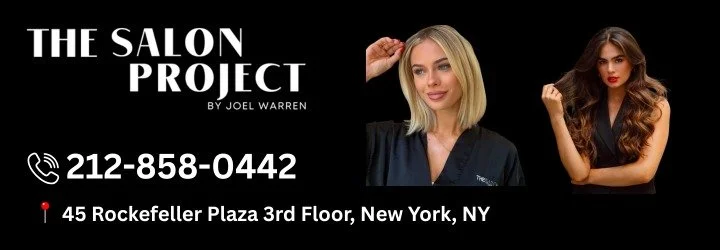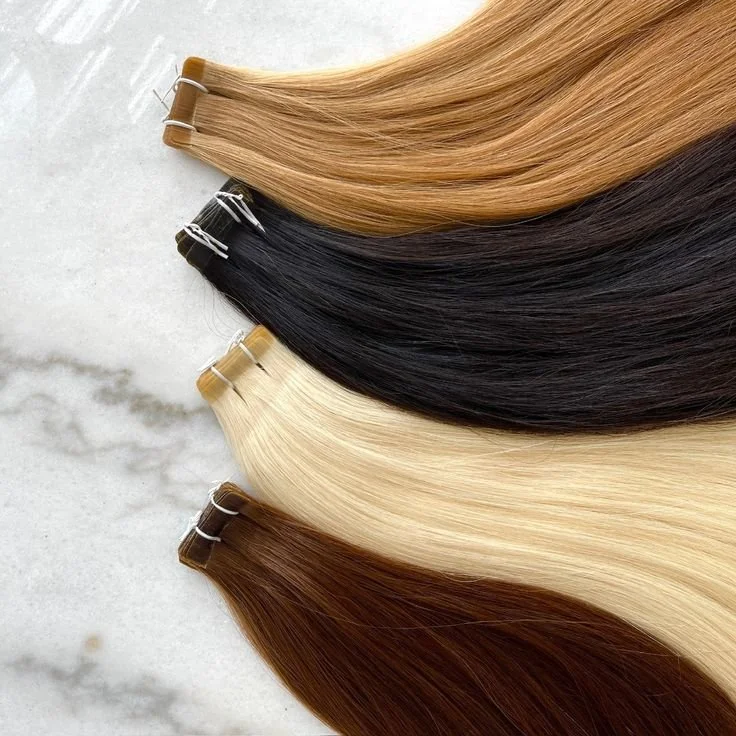Color-Matching Extensions: How We Blend Seamlessly in Salon Lighting & Daylight
When it comes to achieving natural-looking hair enhancements, Color-Matching Extensions are the foundation of flawless styling. Within the first few seconds of meeting someone, hair color harmony—or lack of it—can make a major impression. That’s why expert salons dedicate so much time to ensuring extensions blend not only with your shade but also across different environments like salon lighting and natural daylight.
Why Color-Matching Extensions Matter
Hair extensions do more than add length and volume—they create confidence. But if the shade doesn’t match, the illusion falls apart. A small difference in tone can be very obvious, especially when hair moves or catches the light. Perfect color-matching is what separates professional extensions from at-home kits.
Color-matching isn’t only about finding the exact hue. It also includes undertones, highlights, lowlights, and how light interacts with your hair. A stylist needs to understand whether your natural shade has warm, cool, or neutral undertones and how the chosen extensions behave in different lighting situations.
The Challenge of Salon Lighting
Salons often use bright LED or fluorescent lights that can make hair appear shinier and slightly cooler than it looks outdoors. This is both a blessing and a challenge. On one hand, it helps stylists see details clearly. On the other, it means the extension color might look like a perfect match indoors but shift noticeably once you step outside.
For example, a golden blonde extension might blend beautifully under salon lights but reveal a brassy tone in the sun. That’s why professional stylists always test color harmony under multiple light sources before finalizing.
Natural Daylight: The True Test
Daylight is considered the most honest lighting. It reveals every shade and undertone without distortion. A true extension match must hold up when you walk outside for brunch, run errands, or attend an outdoor event.
Natural daylight also changes throughout the day. Morning light is softer and cooler, while midday sunlight is strong and bright, often exposing contrasts more sharply. A great stylist ensures your extensions stay flawless under all these conditions.
Professional Techniques for Seamless Color Matching
Matching extensions to natural hair is an art. Here are the most common strategies salons use to achieve invisible blends:
1. Multi-Tonal Extensions
High-quality extensions are rarely one flat color. Instead, they incorporate several complementary tones, just like real hair. These variations allow extensions to adapt to both salon lighting and daylight, blending more naturally as hair moves.
2. Custom Coloring
Sometimes, pre-made shades aren’t enough. Stylists will tone, dye, or gloss extensions to match your unique hair color precisely. This extra step ensures harmony from every angle.
3. Root Smudging
If your natural roots are darker than your lengths, stylists often use root smudging on extensions. This creates a shadow at the root, making the transition seamless and natural.
4. Balayage and Ombre Matching
Extensions don’t always have to be one solid shade. Many clients prefer balayage or ombre looks. Extensions can be customized to mimic these techniques, ensuring the blend works across gradients and highlights.
5. Light Testing in Multiple Environments
An expert stylist doesn’t just stop at the salon mirror. They’ll often check how the extensions look by taking you near a window or under natural daylight lamps before confirming the match.
Common Mistakes in Color-Matching Extensions
Even with the best intentions, mistakes can happen. Here are a few pitfalls to avoid:
Choosing Too Dark a Shade: Darker extensions are harder to blend and can create harsh lines.
Ignoring Undertones: A cool-toned ash blonde will never blend seamlessly with warm honey blonde, even if they appear similar in shade.
Forgetting Seasonal Shifts: Hair color can naturally lighten in summer and darken in winter. Extensions should adapt accordingly.
Skipping Maintenance: Glosses or toners may be needed every few weeks to keep extensions and natural hair aligned in color.
How Stylists Handle Different Hair Colors
Different hair colors bring unique challenges for extensions:
Blondes: Must balance brassiness indoors and outdoors. Multi-tonal blonde extensions with ash and honey hues often work best.
Brunettes: Can appear flat if extensions don’t include dimension. Highlights or lowlights are key.
Redheads: The rarest natural shade, making exact matches difficult. Custom coloring is almost always necessary.
Black Hair: Needs careful undertone matching (blue-black vs. soft black) to avoid harsh contrast.
Client Consultation: The Key to Success
A successful color match starts before any extensions are applied. During consultation, stylists analyze:
Your natural hair color under different lighting
Your desired result (length, volume, highlights, balayage)
Your daily environments (indoor office, outdoor lifestyle, evening events)
This holistic approach ensures extensions not only look great in the salon chair but also in your everyday life.
Maintaining Color Harmony After Application
Even with a perfect initial match, maintaining seamless color requires care:
Use Sulfate-Free Products: Preserves both natural hair and extension color.
Protect Against UV Rays: Sunlight can alter shades, so UV-protectant sprays help.
Avoid Chlorine Damage: Pool chemicals can shift color, especially in blondes.
Schedule Toner Refreshes: Keeps undertones aligned over time.
Why Professional Blending Beats DIY
While clip-ins and at-home extension kits are accessible, they rarely achieve the same flawless look as salon-applied extensions. Professionals not only match color but also strategically place extensions for movement, dimension, and light reflection. This artistry is what makes the extensions appear undetectable.
Real-Life Example: The Blonde Bride
One of the most common scenarios requiring expert color matching is bridal styling. A bride may need added volume or length for her wedding day, but the extensions must look invisible in both photography (which uses strong flash) and natural daylight (outdoor ceremonies or portraits). A stylist will carefully tone extensions to match both settings, ensuring the bride’s hair looks naturally radiant in every photo.
Looking Ahead: The Future of Color-Matching Extensions
Technology continues to improve extension color blending. Some innovations include:
AI Color-Matching Tools: Apps and scanners that analyze your hair in multiple lighting scenarios.
Heat-Safe Fibers: Synthetic blends that better mimic natural hair shine under different light sources.
Customizable Balayage Extensions: Pre-blended pieces designed to match modern coloring techniques effortlessly.
Final Thoughts
Color-Matching Extensions are the secret to truly seamless, natural-looking hair enhancements. More than just a cosmetic step, they are the art of making extensions invisible in every environment—whether under bright salon lights or in the glow of afternoon sun. With professional techniques like multi-tonal matching, custom coloring, and thorough consultation, extensions can look indistinguishable from natural hair.
So, the next time you step out of the salon, know that the true test isn’t just the mirror—it’s how your hair looks in daylight, at dinner, and in every photo. Perfect color-matching ensures your extensions shine just as beautifully as you do.




